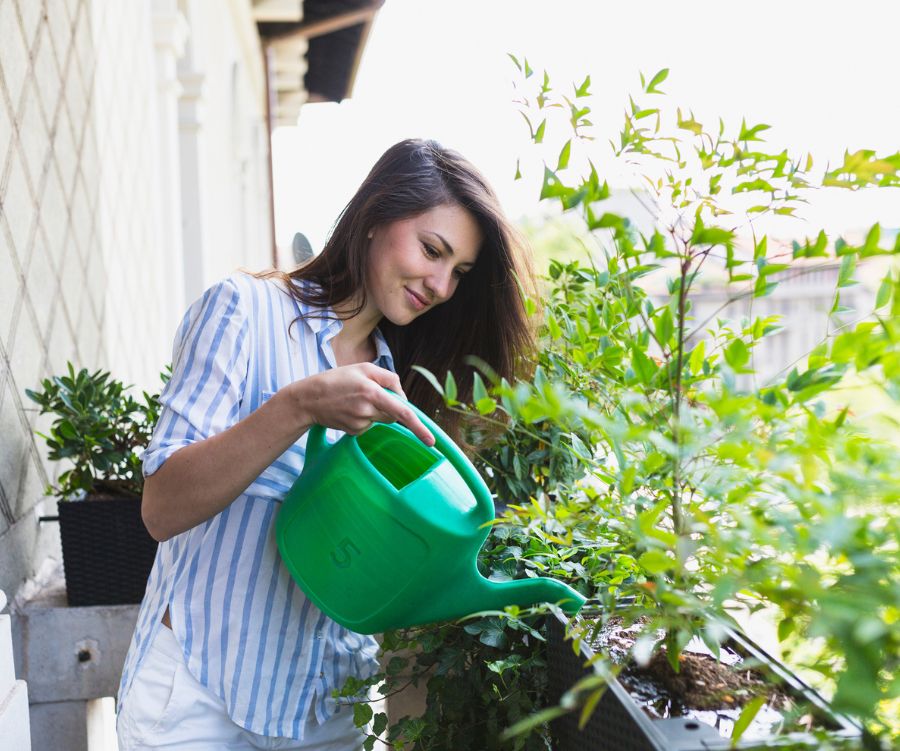Green living would have to be one of the top home-living trends right now, as we all seek to prioritise our health, save money and tread lightly in the preservation of our planet. There are now multiple ways to build, decorate and live sustainably without having to skimp on style. And the best part? More and more household brands are getting on board, providing eco-friendly options that are accessible and affordable – Carpet Court is one of them.
Whether you’ve already started making sustainable selections around your home or you’re new to the market, here are some tips for making this trend work for you.
First up, what is sustainable living?
It’s easier to live sustainably than you might first think. Essentially, it involves being more conscious and aware of the production processes and materials that go into making the fixtures and furnishings used in your home.
If you’re building from scratch, consider using natural materials like timber, cork or bamboo, long-lasting steel or concrete or recycled or reclaimed bricks and tiles. This applies to soft furnishings, too. Utilising natural fibres like wool, cotton or rattan will bring layers of texture and comfort to your decor and have knock-on benefits for the planet.
Likewise, focusing on the energy efficiency of your home selections will help reduce your carbon footprint – from thermal-efficient insulation panels and blinds, to appliances that use less water and energy, it all counts.
Making these changes might seem like a time-consuming process, but remember, you can take it one step at a time, gradually replacing things around the home as they wear out. Rest assured that every simple change you make can have lasting benefits. In addition, it’s no longer a huge expense to switch to sustainable options – in fact, it can help save you money in the long run. Take these steps to become more sustainable.
Opt for second-hand
This is a great and inexpensive way to incorporate sustainable living options into your home. Whatever your budget, there are plenty of ways to explore the second-hand market and find quality, unique items that will suit your aesthetic and home space.
Try Facebook Marketplace or Gumtree, garage sales, op shops and antique stores, along with salvage material yards, for a world of second-hand – and sustainable – options.

If you’re building your home, repurposing salvaged bricks from old homes is a great sustainble option.
Consider non-toxic materials
It’s no secret that many artificial materials can be laden with chemicals that may release toxins into the environment over time. Toxins can be challenging to eliminate, and one way to reduce them is to consider the materials you’re inviting into your home.
This includes everything from the woods and metals you choose, to the carpeting, insulation, and even the paint on your walls. VOC-free paint is an excellent non-toxic option for a healthy home, and you may also like to swap out single-use plastic products like storage containers, shopping bags and toothbrushes for eco-friendly alternatives.

Breathe easy by choosing low-toxin paints and materials for your home.
Focus on natural materials
A great way to ensure the materials you invite into your home are non-toxic is to focus on utilising natural materials wherever possible. You may be surprised how many products on the market now tick this box. Natural materials are not only healthier for your home, they’re more beneficial for the planet as they break down and biodegrade, meaning if you need to replace them, they won’t be hanging around for decades to come.
Many interior design brands prioritise eco-friendly production, offering rugs and furnishings in natural fabrics such as wool, cotton and linen.
Prioritise energy-efficient products
It might not be the first thing you think of when hearing ‘sustainable living’, but selecting energy and water-efficient products significantly impacts your home’s sustainability.
The benefits of energy-efficient products are two-fold: they help to reduce household bills, plus lower energy use translates to a lower carbon footprint, reducing your home’s impact on the environment.
The most obvious example is large appliances, many of which come with energy and water star ratings to help you shop. You can also install solar panels or heat pump water heaters, and use proper insulation for your windows, floors and roofing to reduce your reliance on electric heaters and cooling.

Check the star rating on your appliances for the best energy-efficient options.
Explore sustainable innovations
The market has come a long way when it comes to recycling materials like plastic and nylon into stylish new by-products. New, innovative manufacturing processes mean there are plenty of stylish options to choose from, including Carpet Court’s exclusive new eco-friendly flooring options.
The ECONYL® regenerated nylon range uses 100 per cent recycled yarn made from recovered nylon waste products – including fishing nets, fabric scraps and carpets destined for landfill. There are 11 Carpet Court products featuring ECONYL® regenerated yarn, in an array of on-trend colours, textures and styles.

Carpet Court’s ECONYL® carpets use 100 per cent recycled yarn made from waste products like fishing nets, fabric scraps and old carpets.
Brought to you by Carpet Court. If you’re looking to make some sustainable upgrades to your living spaces, Carpet Court has a wide range of products for every budget, style and aesthetic. Discover more online today.



